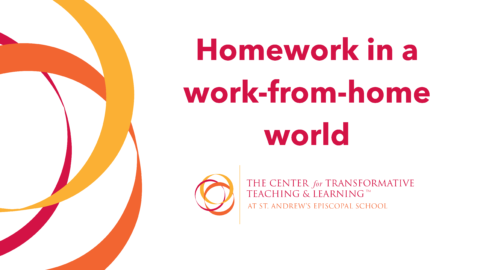By Dr. Ian Kelleher and Glenn Whitman
Editor’s Note: This article was originally published by Edutopia. Follow the link below to read the piece in its entirety.
It might feel counterintuitive, but in many ways the spring of 2020 was an opportune time to launch into a rigorous project. While the nation’s school system was confronting an unprecedented disruption at mid-year, students were well-prepared to apply the knowledge they had already gained to a hard problem of their choice. Well-designed projects allowed them to work independently at home in a way that was engaging and provided continuity of learning.
What about this year? Projects are still a good way to motivate students during challenging circumstances, but we need to take care so that learning actually takes place. How can we use what we know about the science of learning to design projects that truly work?
A starting point: While some see PBL as part of a vision to remake the American school, it’s not always an efficient way to impart core knowledge and skills. Direct instruction, which involves a lot of radar pings and low-stakes testing to determine how students are doing—followed by more instruction and practice based on any knowledge gaps you find—is more effective in that regard. I know this is tipping over a sacred cow, so take a look at this academic paper, this article, and this blog.
Psychology professor David Daniel’s insights can help us navigate the terrain between learning core skills, and beginning challenging new projects. Daniel says that the goal of learning should be to create knowledge that is durable, usable, and flexible: durable far beyond the length of your course; known well enough to be actually usable by students; and flexible enough that they can use it in new contexts. Once core concepts are engrained, that’s when projects can really shine—it can be where durability, usability, and flexibility are built, where true learning takes place.
Continue reading at Edutopia.org.
Dr. Ian Kelleher is a science teacher at St. Andrew’s Episcopal School, and Head of Research for its Center for Transformative Teaching & Learning. His work focuses on helping teachers translate the science of learning into everyday practices in their own classrooms, and measuring the impact. Ian is the co-author of “Neuroteach: Brain Science and the Future of Education,” and co-designer of Neuroteach Global. Ian is the the inaugural Joseph and Kathleen Dreyfuss Faculty Chair for Research, an endowed position at St. Andrew’s Episcopal School for the lead CTTL researcher.
Glenn Whitman is the co-author of “Neuroteach: Brain Science and the Future of Education” and directs the Center for Transformative Teaching and Learning at St. Andrew’s Episcopal School. Glenn is a former Martin Institute for Teaching Excellence Fellow and author of “Dialogue with the Past: Engaging Students and Meeting Standards through Oral History” as well as co-editor of Think Differently and Deeply, the international publication of the CTTL. Glenn earned his MALS from Dartmouth College and a BA from Dickinson College.




